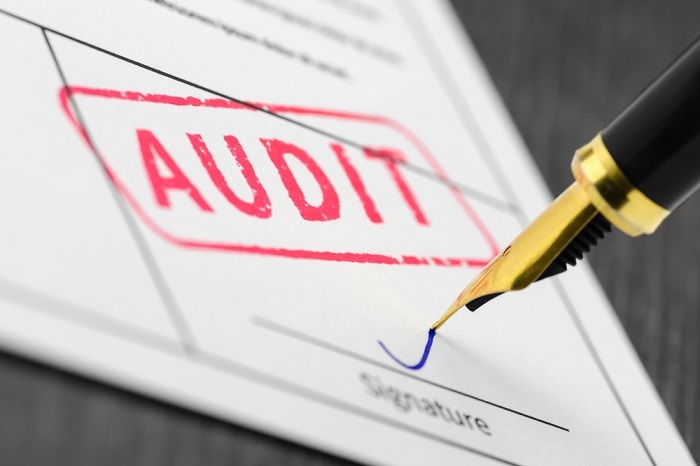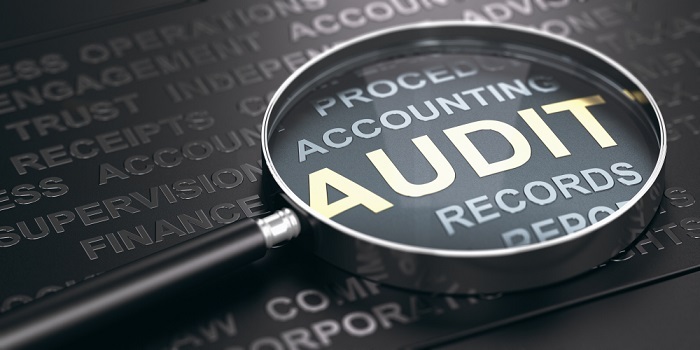
 Data Structure
Data Structure Networking
Networking RDBMS
RDBMS Operating System
Operating System Java
Java MS Excel
MS Excel iOS
iOS HTML
HTML CSS
CSS Android
Android Python
Python C Programming
C Programming C++
C++ C#
C# MongoDB
MongoDB MySQL
MySQL Javascript
Javascript PHP
PHP
- Selected Reading
- UPSC IAS Exams Notes
- Developer's Best Practices
- Questions and Answers
- Effective Resume Writing
- HR Interview Questions
- Computer Glossary
- Who is Who
What is the Role of Audits in Quality Management?
Audits of quality are an essential component of quality management systems. Internal audits, external audits, and supplier audits are the three types of audits in quality management. Quality audits help businesses identify areas for improvement and ensure that established standards are met.

They are also critical in ensuring regulatory compliance. This article discusses the significance of quality audits, their benefits, and how to prepare for them. This article also discusses the essential components of a quality audit checklist, continuous improvement through quality audits, and incorporating quality audits into quality management systems.
Types of Audits in Quality Management
Audits are critical in Quality Management because they help to identify areas for improvement and ensure that established standards are met. In Quality Management, there are three types of audits ?
Internal audits are carried out by a company's own internal audit team. Internal audits are carried out to determine whether a company's quality management system is effective and compliant with applicable standards. Internal audits are performed by 63% of organisations, according to an American Society for Quality (ASQ) survey.
External audits are carried out by an independent third-party auditor. Typically, this type of audit is required to ensure compliance with industry-specific regulations or standards. According to the same ASQ survey, 51% of organisations have external audits performed on them.
Supplier audits are performed to assess the quality management systems of an organization's suppliers. These audits ensure that suppliers meet the organization's quality standards and can be relied on to provide high-quality products or services. According to an LNS Research survey, 58% of organisations conduct supplier audits.
Benefits of Conducting Quality Audits
Quality audits are critical in quality management. One significant advantage of conducting quality audits is that they help to identify areas for improvement. According to an American Society for Quality study, businesses that conducted regular audits reported a 40% reduction in defects and a 33% reduction in customer complaints.
This is due to the fact that quality audits enable businesses to detect problems early on and implement necessary changes to prevent them from recurring in the future. Businesses can maintain high levels of customer satisfaction and ultimately increase their bottom line by continuously improving their processes and products.
How to Prepare for a Quality Audit

Preparing for a quality audit is an important part of quality management. An audit is a process that examines the performance of a business and identifies areas for improvement. According to a recent survey, only 56% of businesses are confident in their ability to pass a quality audit.
There are several things you can do to get ready for a quality audit. First, make certain that all of your documentation is current and correct. Examples include process manuals, work instructions, and quality procedures. Following that, provide training to your employees on how to use these documents.
Internal audits should also be conducted on a regular basis to identify any potential problems before the official audit. This will give you the opportunity to address any issues and make any necessary changes.
Finally, make certain that your team is prepared to respond to questions during the audit. They must be able to explain their processes and provide evidence of their work. You can improve your overall quality management system and increase your chances of passing a quality audit by following these steps.
Role of Audits in Ensuring Regulatory Compliance
Audits are critical in ensuring that companies adhere to quality management regulations. Auditors inspect a company's processes and procedures to ensure they meet industry standards and regulations.
In fact, 74% of businesses believe that audits help them improve their regulatory compliance, according to a survey (Source: Deloitte). Companies that conduct audits to ensure they are meeting regulatory requirements can identify areas for improvement and take corrective action.
Key Elements of a Quality Audit Checklist
A quality audit is a process that assists a company in ensuring that its products or services meet certain quality standards. A checklist is frequently used to ensure that all necessary areas are covered when conducting a quality audit. A quality audit checklist should include the following key elements ?
Objectives ? The objectives of the audit should be clearly defined so that everyone involved understands what the audit is attempting to achieve.
Scope ? The scope of the audit should also be clearly defined so that everyone understands what areas will be covered.
Criteria ? Quality evaluation criteria should be established so that everyone understands the standards used to assess products or services.
Methodology ? The audit methodology should be established so that everyone is aware of how the audit will be carried out.
Resources ? The audit resources should be identified so that everyone is aware of what is required to complete the audit.
Roles and responsibilities ? The roles and responsibilities of everyone involved in the audit should be clearly defined so that everyone knows what they are responsible for.
Reporting ? A reporting mechanism should be established so that everyone is aware of how the audit results and any issues that are identified will be communicated.
A company can help ensure that its products or services meet the necessary quality standards by including these key elements in a quality audit checklist.
Continuous Improvement Through Quality Audits
Continuous improvement through quality audits is an important aspect of quality management. Quality audits help organisations identify areas for improvement by reviewing their processes, procedures, and products. An independent auditor who has received quality management training conducts these audits.
The auditor will evaluate the effectiveness of the company's quality management system in meeting the goals and objectives of the company. The auditor will also identify areas where the company can improve its processes and procedures to ensure customers receive the highest quality products and services.
Continuous Improvements Quality audits entail an ongoing cycle of improvement. Following an audit, the auditor will provide the company with feedback on areas for improvement. Following that, the company will take action to address the audit's findings. The auditor will then conduct another audit to determine whether the company's actions in improving their processes and procedures were successful.
Quality audits can help organisations improve their processes and procedures by ensuring that their products and services meet or exceed customer expectations. This improves customer satisfaction and loyalty, which leads to increased revenue and profitability for the organisation.
Integrating Quality Audits into Quality Management Systems
Integrating quality audits into quality management systems is critical for ensuring that products and services meet the required standards. A quality audit is a systematic examination of processes, procedures, and records to identify areas for improvement.
Incorporating quality audits into quality management systems allows for continuous monitoring and evaluation of the system's effectiveness, as well as making changes to improve it.
Companies can then identify and address issues before they become major problems, resulting in higher-quality products and services.

